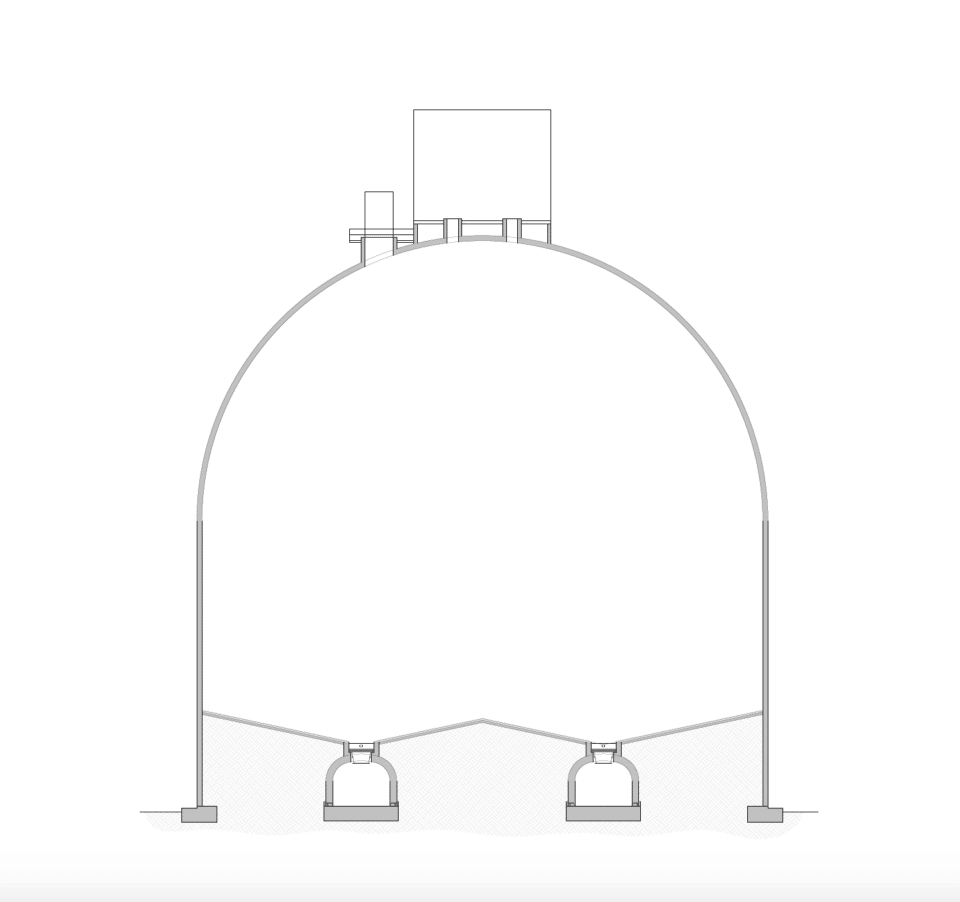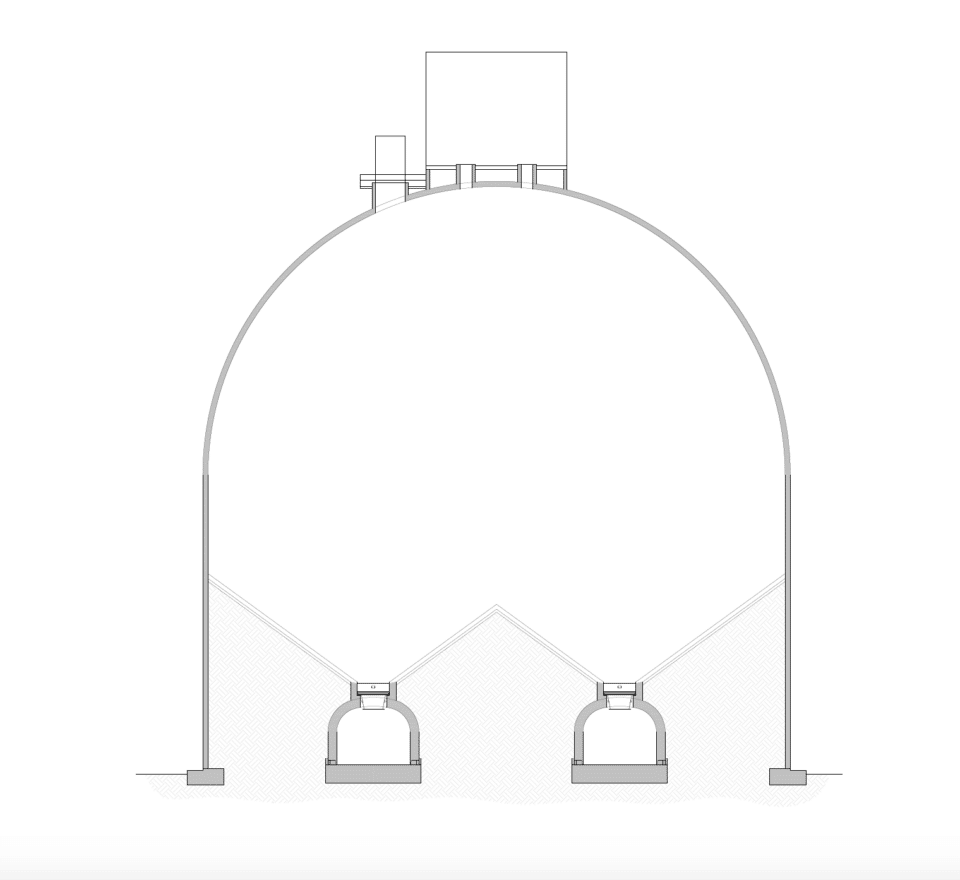One of the early conversations our team has with potential wood-pellet clients is about floor options. Here are three popular choices:

Gravity feed with front-end loader is the least expensive reclaim model. It is commonly used in domes, and because no mechanical system is involved, maintenance costs are low. The likelihood of emergency shutdown is remote, and the gravity reclaim rate is high. A filling tube can be used to reduce dust and fines.
On the other hand, front-end loader operational costs must be considered, as should the risks involved with personnel entering the dome to reclaim residual pellets. And reclaim rates are variable, slowing down as pellets stop flowing with gravity when the stored volume is reduced.

The VibraFloor system provides 99 percent reclaim. It was the model of choice for Dome Technology’s project with Drax in the United Kingdom and was installed in their four 80,000-metric-ton domes. Because of built-in redundancy, global failure is unlikely, and a filling tube can be installed to aid in dust mitigation. This model has upfront costs associated with system purchasing and installation, plus maintenance costs over time. Typically, two reclaim tunnels are required for domes with a diameter greater than 160 feet (48.8 meters).

A live-bottom sloped floor provides 100 percent gravity reclaim and requires no mechanical equipment inside the dome. The sloped floor does not require personnel or front-end-loader entry. One tunnel is ideal for domes up to 131 feet (40 meters) in diameter, and two tunnels are better for larger-diameter domes. The cost of construction is greater than other floor systems, and the sloped floor eats up capacity inside the dome. This requires a taller dome to compensate for lost volume.